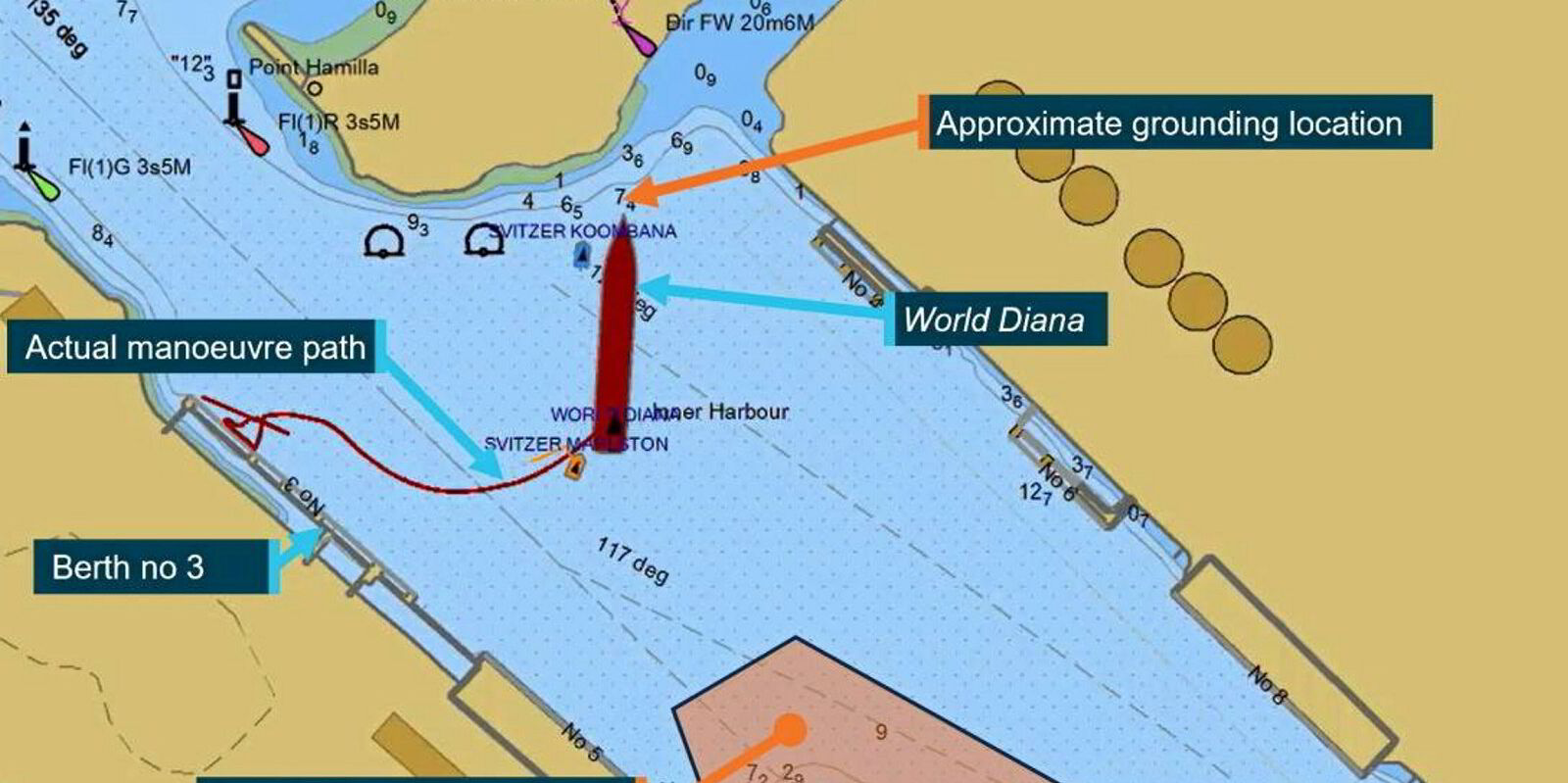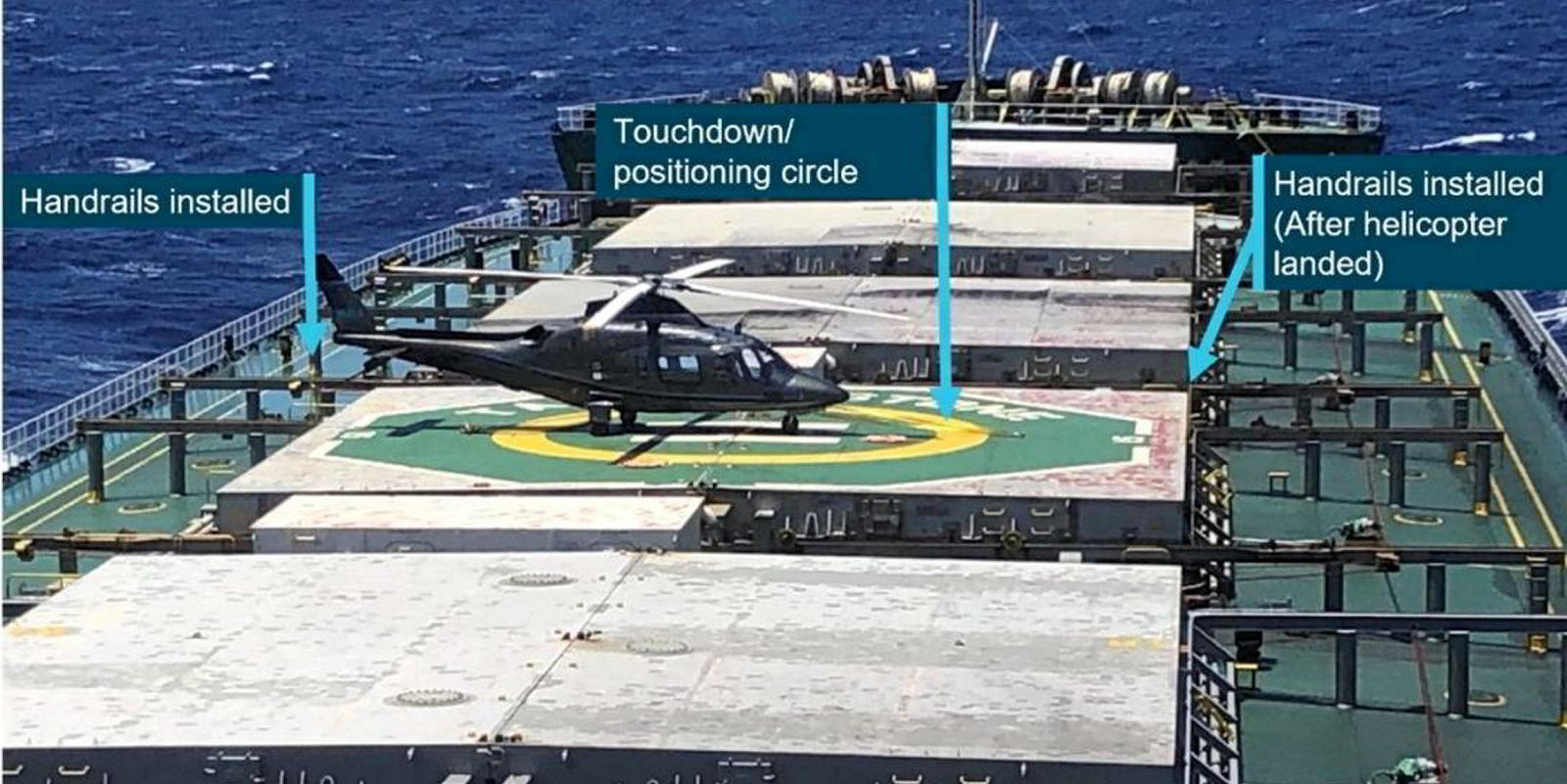Pilotage and bridge operations have come in for criticism following the grounding of a BW Group-owned bulker in Australia.
A report by the Australian Transport Safety Bureau (ATSB) found that the 81,200-dwt OSM Maritime-operated panamax World Diana (built 2020) was too early into a turn as it left its berth in Bunbury, south of Perth in Western Australia on 22 April last year.
The BW Dry Cargo ship had two tugs assisting at the time.
ATSB said the bulker had to be manoeuvred into the inner harbour turning basin and turned to port to exit the harbour entrance.
This operation did not go as planned and the ship’s bow grounded on a shallow bank to the east of the entrance.
Subsequent inspections and surveys indicated minor hull damage and the vessel was cleared to continue trading.
The ATSB investigation found that the World Diana’s turn was started earlier than planned, which reduced the available sea room to complete it.
During the turn, the ship’s speed was allowed to increase until there was no room to safely turn.
The bureau also found that bridge resource management during the pilotage was ineffective.
The pilot set up the portable pilot unit but did not use the unit to its full potential, the report said.
Too late
The departure plan did not provide any specific information or limits for the turn to either the ship’s bridge team or the tug masters.
Nevertheless, while the tug masters had previous experience with this manoeuvre and the ship’s bridge team had further resources available, no concerns were raised with the pilot until it was too late to avoid the grounding.
OSM Thome has been contacted for comment.
The port was also found not to have developed adequate procedures that included arrival and departure plans for larger ships required to berth starboard-side.
Southern Ports has since updated its marine pilotage standards and procedures for Bunbury.
A maximum rate of turn for ships in the harbour has also been specified.
“This grounding illustrates the important part that bridge resource management plays in safe pilotage. Effective use of available resources reduces the chance of single-person errors and minimises their impact,” the ATSB said.
“In this instance, proper use of the portable pilot unit, effective communication and active involvement of the World Diana’s bridge team and the tug masters would have allowed the deviation from the plan to be detected in time to prevent the grounding.”




